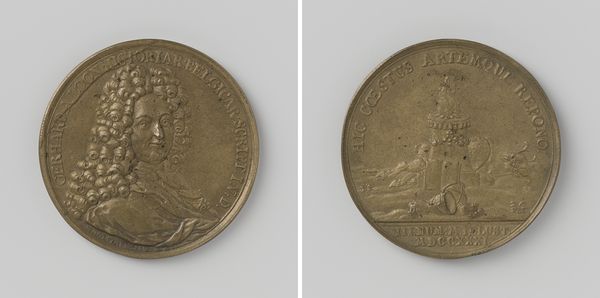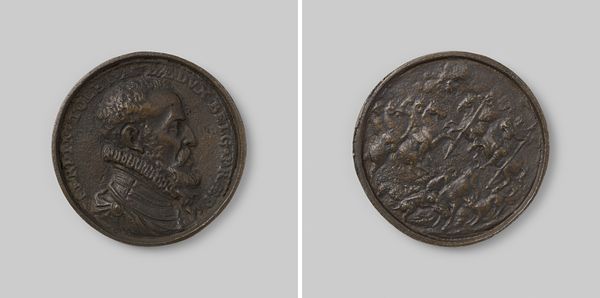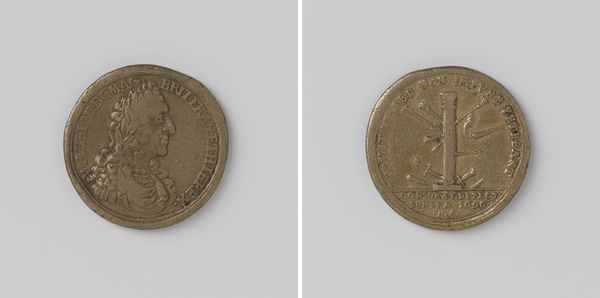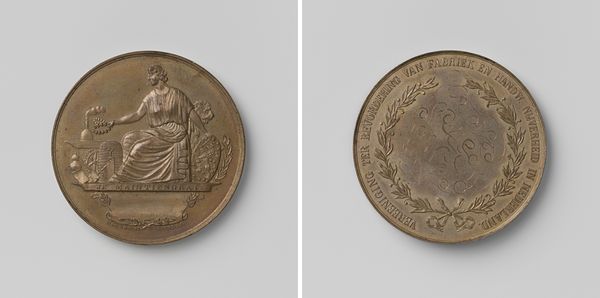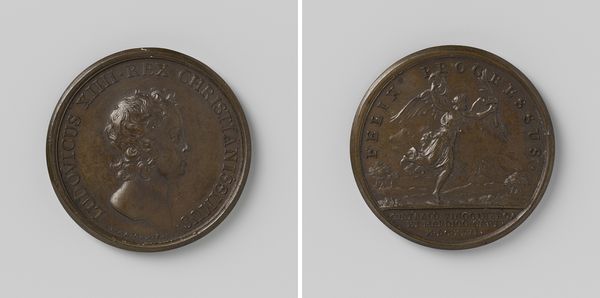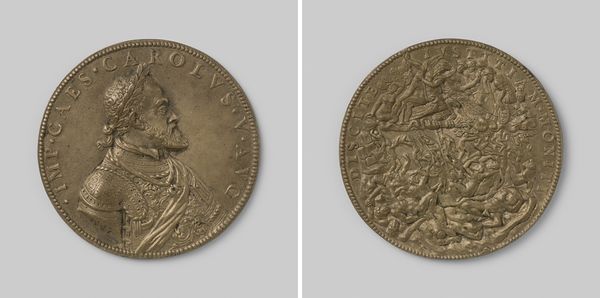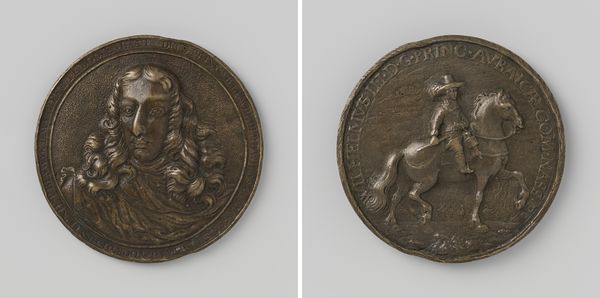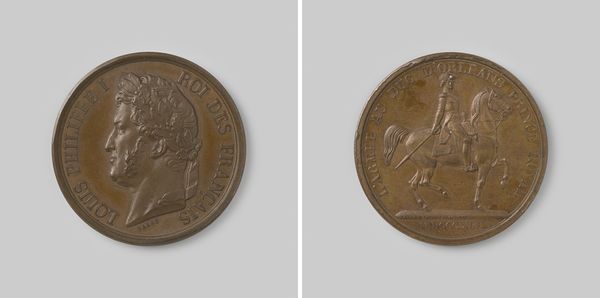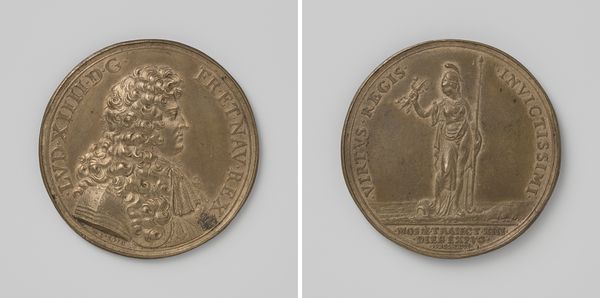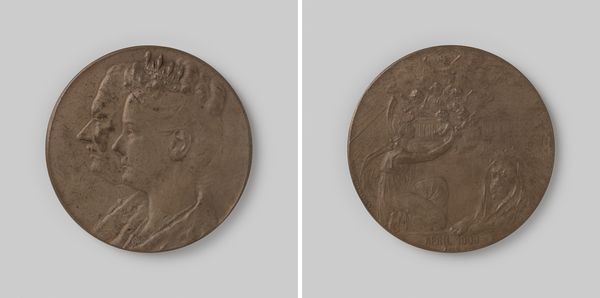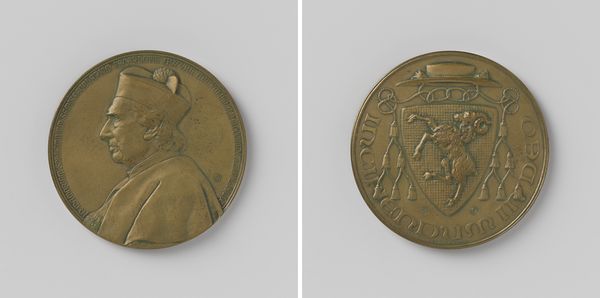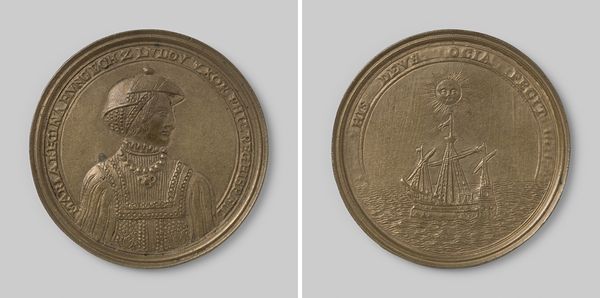
Verdrag tussen de Keizer en de koning van Zweden over het herstel van godsdienst vrijheid van de Protestantse kerk in Silesie, ter ere van Anna Stuart 1708
0:00
0:00
metal, bronze, sculpture
#
portrait
#
baroque
#
metal
#
bronze
#
sculpture
#
history-painting
Dimensions: diameter 4.3 cm, weight 14.99 gr
Copyright: Rijks Museum: Open Domain
Curator: This medal, crafted in 1708 by Christian Wermuth, commemorates "The Treaty Between the Emperor and the King of Sweden Concerning the Restoration of Religious Freedom for the Protestant Church in Silesia, in Honor of Anna Stuart." It's rendered in bronze. What's your initial take? Editor: Austere. The cool bronze, the flat relief... It reads as formally rigid. Though I see glimmers of Baroque drama in the figure on the reverse side. Curator: Yes, observe the inscription encircling the imagery; these choices underscore the complex religious and political landscape in Europe at that time and place. Silesia was a region contested, with implications for production. Editor: Absolutely. Note how Wermuth balances Queen Anne’s portrait with the allegorical figure of religious freedom seated regally with what appears to be some scepter on the opposite side of this piece. The use of line and shape to create that sense of balanced opposition is ingenious. Curator: The means by which Wermuth gained such skill were embedded in craft guilds and court patronage, as were decisions for the bronze, the lettering font, and iconographic choices. It speaks volumes about patronage and artistry. Editor: And yet, the artist still finds ways to use the medium creatively. Look at how he uses the light reflected by the metal to accentuate certain forms, to model forms in the Baroque manner even with so little variation in depth of plane. Curator: Consider how such medals were dispersed – as gifts, rewards. Each example carrying potent messages. The tactile experience would influence opinion and solidify alliances. The object exists, functions, and is interpreted due to prevailing socioeconomic conditions of manufacture and value. Editor: Yes, and that distribution, that dispersal, enhances the visual rhetoric. The figure of the Queen facing outward towards that inscription... Everything works to drive the core message home. Curator: Thinking about what these medals signified during manufacture sheds considerable insight to modern viewers today. This piece is a monument to negotiation realized via distribution of goods, itself the reward to Wermuth's patrons and laborers. Editor: Precisely, it really encapsulates an entire era, a visual document whose material components have the effect of enriching and expanding its intrinsic meaning.
Comments
No comments
Be the first to comment and join the conversation on the ultimate creative platform.
